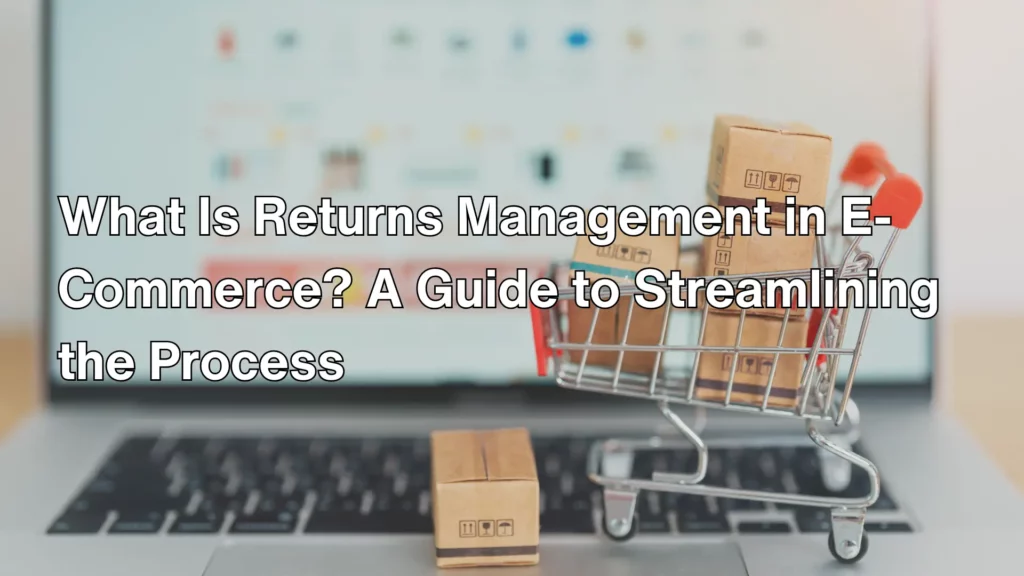We equip you with outsourcing solutions distinctly designed for your business and your customers’ needs.

Online shopping has made life more convenient than ever, but it has also made product returns a lot more complicated. If you run an e-commerce business, how you handle returns can make a big difference in how customers feel about your company. A smooth, straightforward returns process builds trust, encourages repeat business, and helps you stand out from the competition. Let’s walk through what returns management is, why it matters, and how to simplify it.
Returns management is all about handling the process when a customer wants to return, exchange, or get a refund for a product they bought online. This process includes everything from approving returns and organizing shipping to restocking items and issuing refunds. It is part of what is known as reverse logistics, which is moving goods from the customer back to the seller.
Customers will likely shop with you again when your return process is simple and hassle-free. On top of that, handling returns efficiently helps keep your business running smoothly and can even save you money over time.
Managing returns does not have to be overwhelming. Here are some easy strategies to make the process smoother:
Customers do not want to hunt for information about returns. Make your e-commerce return policy easy to find and simple to understand. Use clear language to explain how and when they can return a product. Here’s what to include in your return policy:
For example, if you offer free returns, mention if it is for all items or just certain ones. The more precise you are, the fewer headaches for everyone.
Automated return portals make life easier for you and your customers. With these tools, customers can start a return, print shipping labels, and track the process without needing help from customer service. Automated portals help because they:
Plus, these systems give you helpful data about why products get returned, which can help with business improvements.
Free returns are a big draw for customers but can add up quickly. If you want to offer free returns without hurting your bottom line, here are a few ideas to try:
Also, consider offering free returns only on select products or as a perk for loyal customers. It’s a great way to attract more shoppers while controlling costs.
Returns are a natural part of the shopping experience, and how you handle them matters. A smooth, straightforward return process can leave a positive impression and keep customers returning. Some ways to improve the post-purchase experience include:
Customers who feel supported—even when returning an item—are more likely to give your store another chance.
Returned products should not sit in a corner collecting dust. Create a system to quickly check, restock, or discard returned items. Some best practices for restocking include:
Stay on top of inventory updates to avoid the headache of selling items that aren’t in stock.
Managing returns is important, but reducing returns is even better. Here is how you can cut down on the number of products coming back:
When customers get what they expect, they are less likely to return it.

Reverse logistics sounds complicated, but it just means managing products that come back from customers. It includes everything from receiving and inspecting returns to restocking or disposing of items. Here are the key steps in reverse logistics:
The better your reverse logistics process, the smoother your returns management will be.
Sustainability matters to many shoppers today. Making your returns process more eco-friendly can attract these customers and reduce costs. Consider the following eco-friendly return strategies:
Encourage customers to choose store credit when possible—it helps reduce return shipping emissions.
Managing returns can be time-consuming, especially when you are juggling multiple tasks. That is where Peak Outsourcing comes in. Our team can handle everything from setting up automated return portals to managing reverse logistics.
With our help, you can offer a simple, customer-friendly return experience while focusing on growing your business.
Want to simplify your returns process? Visit our e-commerce returns management services or contact us today to learn more.
Let Peak Outsourcing help turn returns into customer satisfaction and business growth opportunities.
Your company may benefit from outsourcing certain functionality that you currently perform in-house. The resulting benefits can transform the way you do business and provide a greater focus on your core business functions.
Submit a contact form or call Peak Outsourcing today at